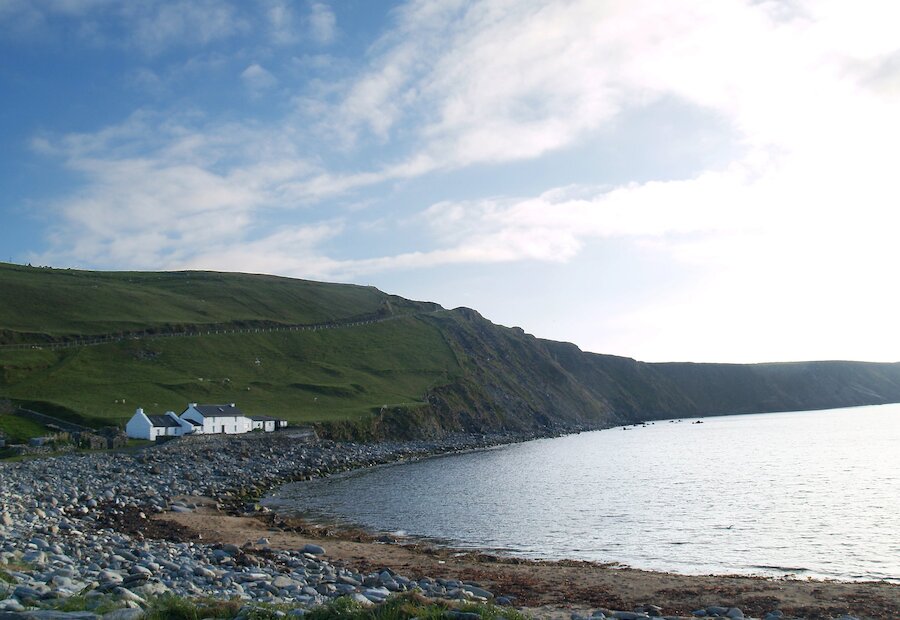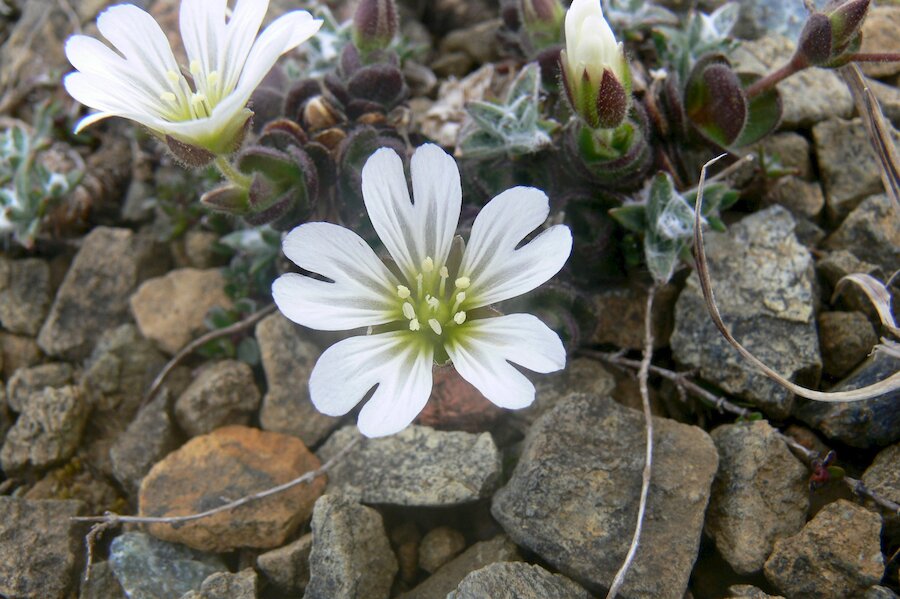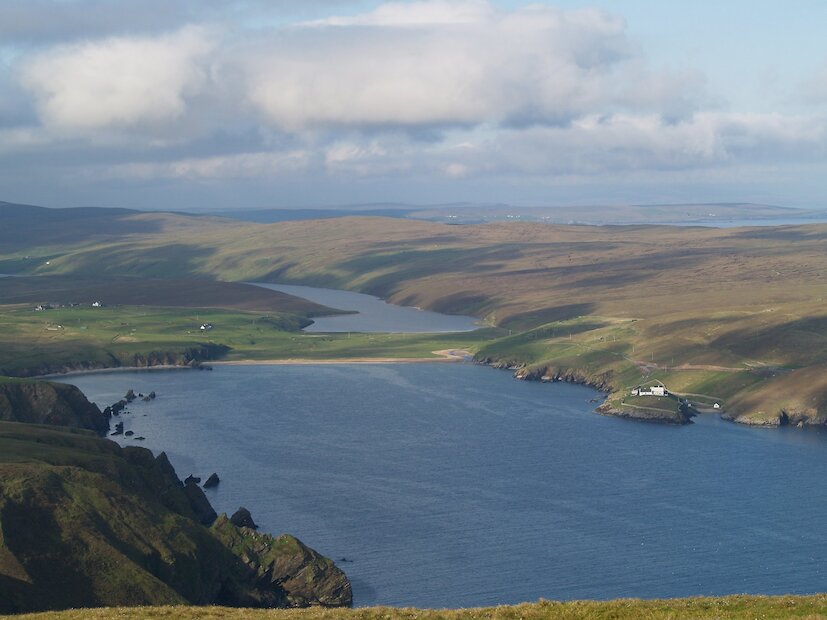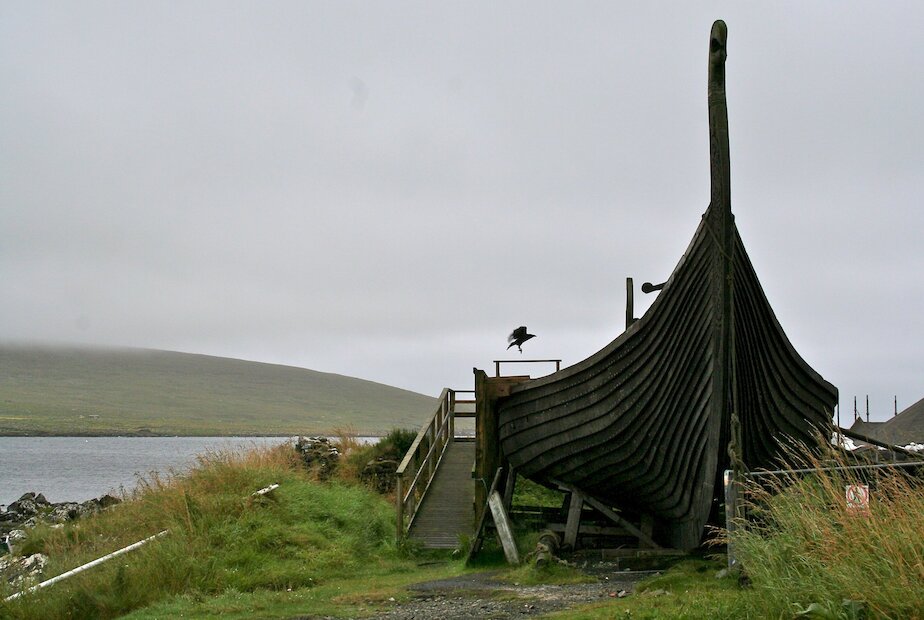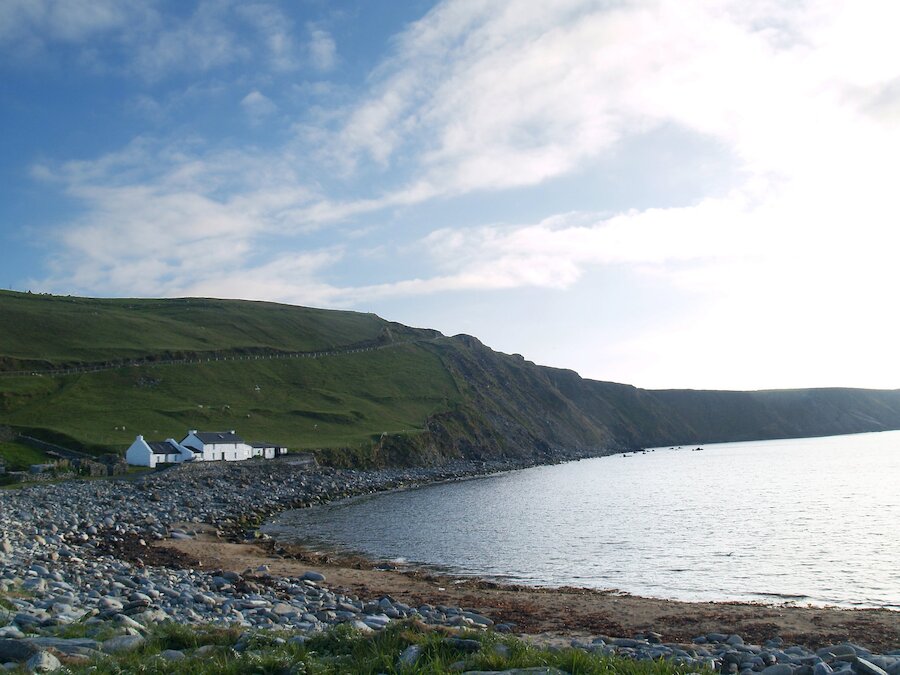Taking the A968 north from Baltasound it is practically mandatory to stop at the World’s most famous bus shelter. You could make a short detour along the small side road beside the bus shelter to visit the Keen of Hamar Nature Reserve. This apparently barren ‘desert’ is the place where, in the 19th century, the teenage botanist Thomas Edmondston discovered the endemic Shetland Mouse-eared Chickweed; more commonly referred to as Edmondston’s Chickweed. Several other rare plants grow on the serpentinite debris of the hillside, including Norwegian Sandwort, Northern Rock-cress and Stone Bramble.
Just past Britain’s most northerly supermarket you can take another short diversion by a track leading down to Hagdale Horse Mill. Alongside the track is evidence of chromite and serpentinite quarrying operations and a Geopark Shetland interpretive panel on the mining history. At the foot of the track is the restored 19th Century horse-powered crushing circle that was used to crush the ore to extract chromite.
From the supermarket there is a climb over and down the almost bare rocky shoulder of Muckle Heog for the descent to the head of Harold’s Wick. The yellow-brown colour of the rocks is due to weathering (rusting) of the rocks due to their high iron content. These rocks once formed part of the Earth’s mantle deep beneath a long vanished ocean before they were eventually pushed to the surface by tectonic forces. Unst is the only place in the British Isles where you can cycle ‘down’ into the Earth’s mantle. There is more information about the fantastic geological history of Unst and Fetlar at Geopark Shetland’s Geowall at Unst Heritage Centre.
